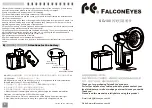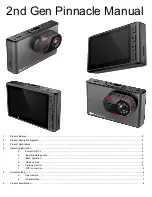
V1.02
Thom Hogan’s Complete Guide to the Nikon D300
Page 424
series, D3, or an F6, with only a few minor differences and a
slight performance drop.
Three primary shooting method (frame rate) settings are
possible (the Shooting Method dial also controls the self timer,
Live View, and Mirror-Up capabilities):
S
Single-frame
. Each time the shutter release is pressed, a
single image is recorded (i.e. holding the shutter release
down past the shot doesn’t take additional pictures). You
can take additional pictures (until the buffer fills) without
having to wait for the camera to write to the
CompactFlash card—you just have to press the shutter
release for each one.
C
L
Continuous Low
. Images are recorded at 3 frames per
second (fps) while you hold the shutter release down
(unless you use Custom Setting #D4 to set another value
from 1 to 7 fps). If the buffer fills and you continue to hold
the shutter release down, the D300 shoots another picture
each time one image has been completely saved to
CompactFlash.
C
H
Continuous High
. Images are recorded at 6 fps (with
internal batteries) or 8 fps
118
(with AA or EN-EL4a batteries
in the MB-D10 vertical grip) while you hold the shutter
release down. If the buffer fills and you continue to hold
the shutter release down, the D300 shoots another picture
each time one image has been completely saved to
CompactFlash.
Note: Nikon’s frame rate specifications are made with the camera
set to manual exposure, manual focus, and a shutter speed
of 1/250 second or faster. If you’re using automatic
exposure modes, slower shutter speeds, or light is too dim
for optimal autofocus, you may experience frame rates
lower than Nikon specifies.
118
7.5 fps if
Auto sensitivity auto control
in
ISO sensitivity settings
is set to
On
.















































